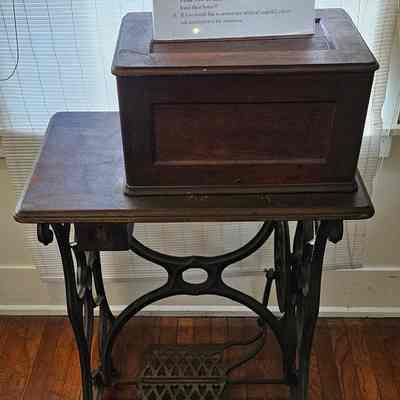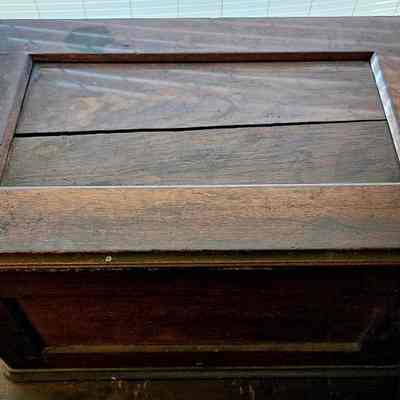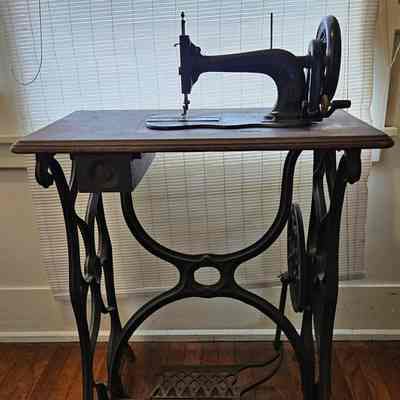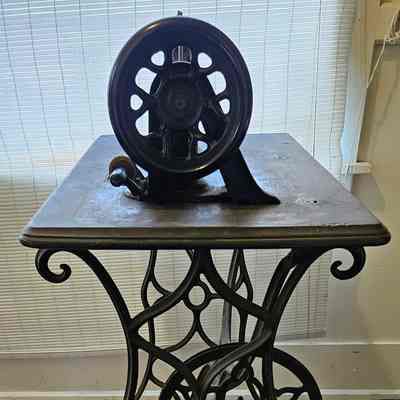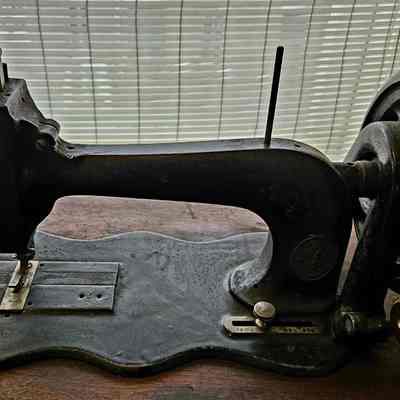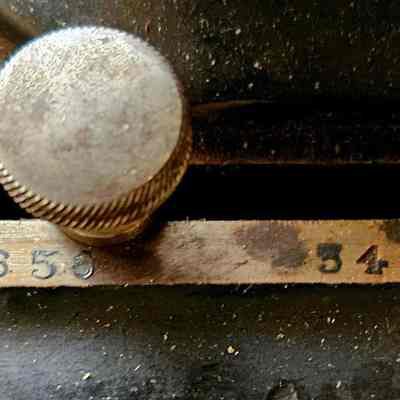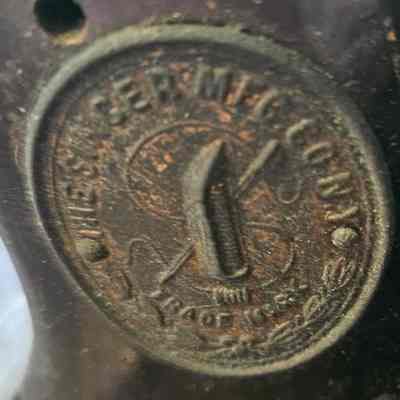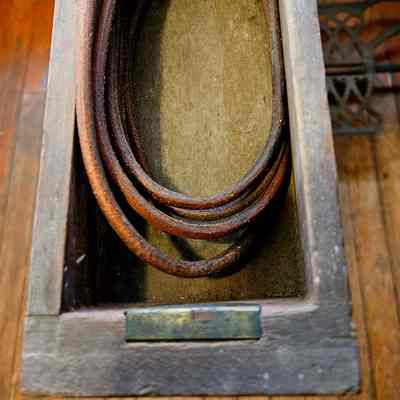Name/Title
Singer New Family Sewing Machine, 1870Entry/Object ID
2024.64.01Description
Singer New Family home sewing machine, serial no. 440656 341656. Wood and iron cabinet. Treadle. Steel machine, painted black, with "guitar-shaped" base. Once had gold leafing, but very little left. No. allotted: 47,000. Allotment year: 1870. Factory: New York City Mott Street. For Singer serial numbers, see https://ismacs.net/singer_sewing_machine_company/early-serial-numbers/singer-sewing-machine-early-serial-number-database.html.Context
The patenting of the sewing machine by Massachusetts native and Connecticut transplant Elias Howe in 1846 touched off a technological, industrial, and social revolution in the United States. By making possible the manufacture of inexpensive clothing, it greatly sped up the pace of American industrialization (which had begun only a few decades earlier with the inventions of the drum carder, spinning jenny, power loom, and cotton gin) and led to the building of newer, larger, and more modern textile mills, such as the Willimantic Linen Company’s great granite Mill Number Two and modern brick Mill Number Four. By changing the way that clothing was manufactured, it spelled the end of cottage industry and the old putting out system and ushered in the age of the sweatshop. By appealing to middle class homemakers, it facilitated the Cult of Domesticity and provided middle class women with the opportunity to prove that they could master complex machinery. Widely available a half century before typewriters or automobiles, more than any other machine the sewing machine came to symbolize American women’s work in the modern machine age. From "Sewing Revolution: The Machine That Changed America," by Jamie Eves, Beverly L. York, Carol Buch, and Michele Palmer. https://millmuseum.org/sewing-revolution/.Collection
Other Sewing Machines CollectionMade/Created
Manufacturer
Singer Sewing Machine CompanyDate made
1870Time Period
19th CenturyPlace
City
New York, NYRegion
NortheastContinent
North AmericaLexicon
Nomenclature 4.0
Nomenclature Secondary Object Term
Machine, SewingNomenclature Primary Object Term
Machine, NeedleworkNomenclature Sub-Class
Needleworking EquipmentNomenclature Class
Textileworking T&ENomenclature Category
Category 04: Tools & Equipment for MaterialsAccessories
Accessory
Leather drive beltMaterial
Wood, Cast Iron, SteelLocation
Location
Exhibit Room
Stairwell Gallery* Untyped Location
Main Museum BuildingCategory
ExhibitDate
November 25, 2024Condition
Overall Condition
FairDate Examined
Nov 24, 2024Examined By
Eves, J.Cleanliness
Arrived quite dirty, with some rust. Given basic cleaning: wood washed with Murphy's Oil Soap. Metal rubbed with cleaning oil.Surface
Most of the gold leafing worn off.Provenance
Provenance Detail
According to the donor, the machine was in the cellar of his mother's home. It had been given to her by her brother. The Mom recently passed away, and the donor found it while cleaning out her house. No other family wanted it.Created By
historian@millmuseum.orgCreate Date
November 25, 2024Updated By
historian@millmuseum.orgUpdate Date
November 25, 2024
